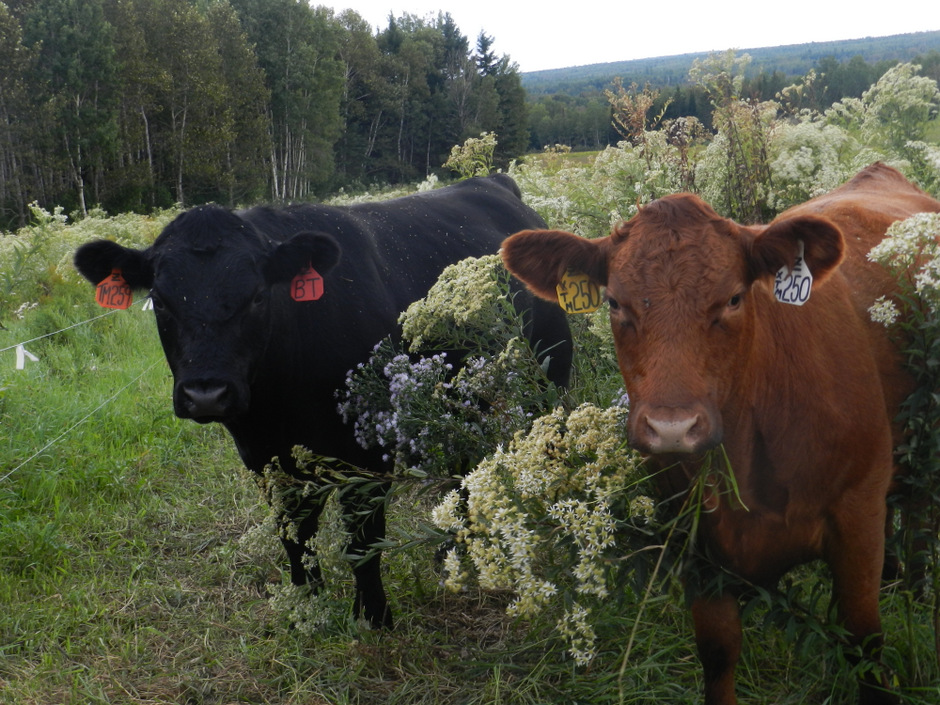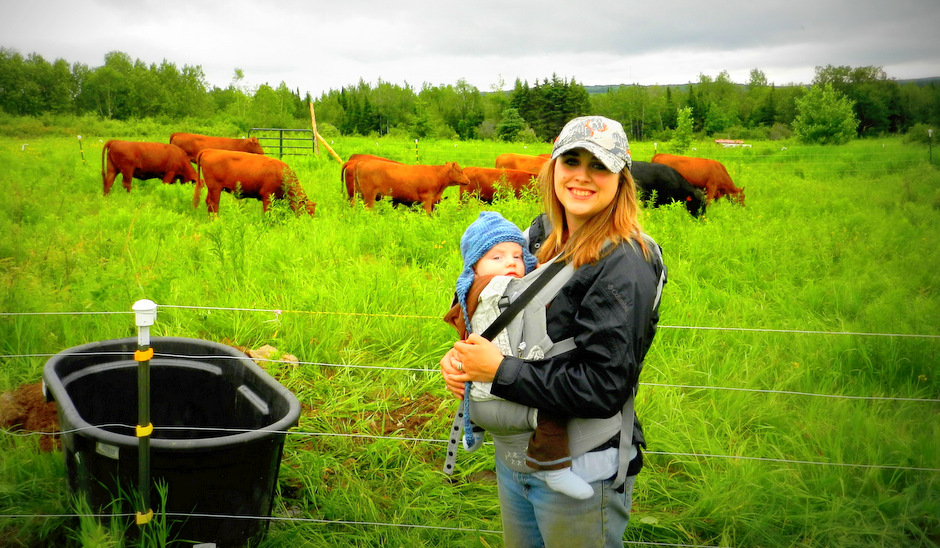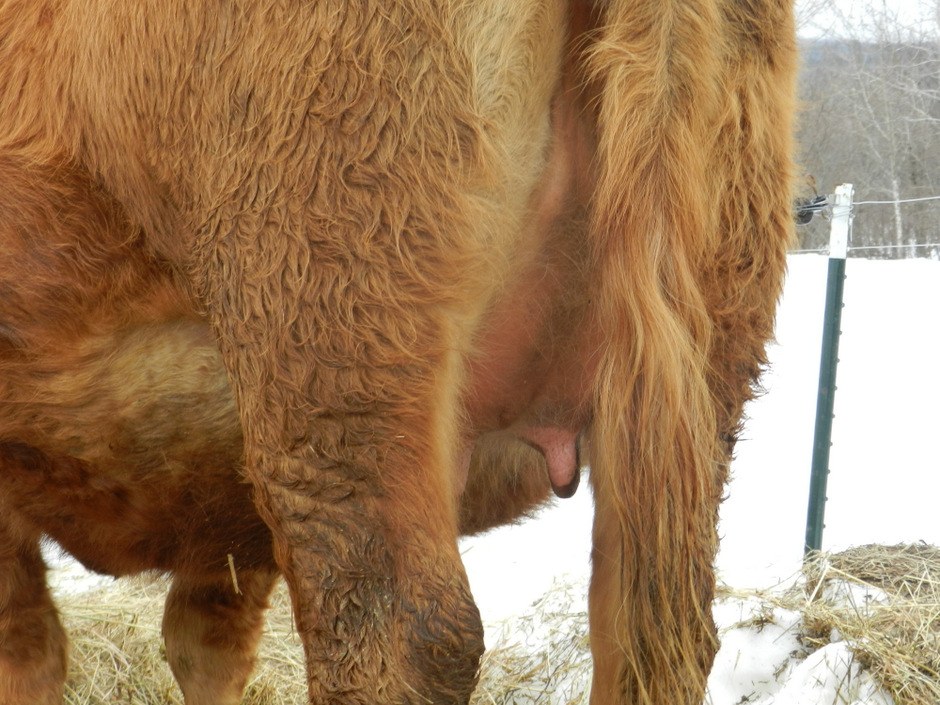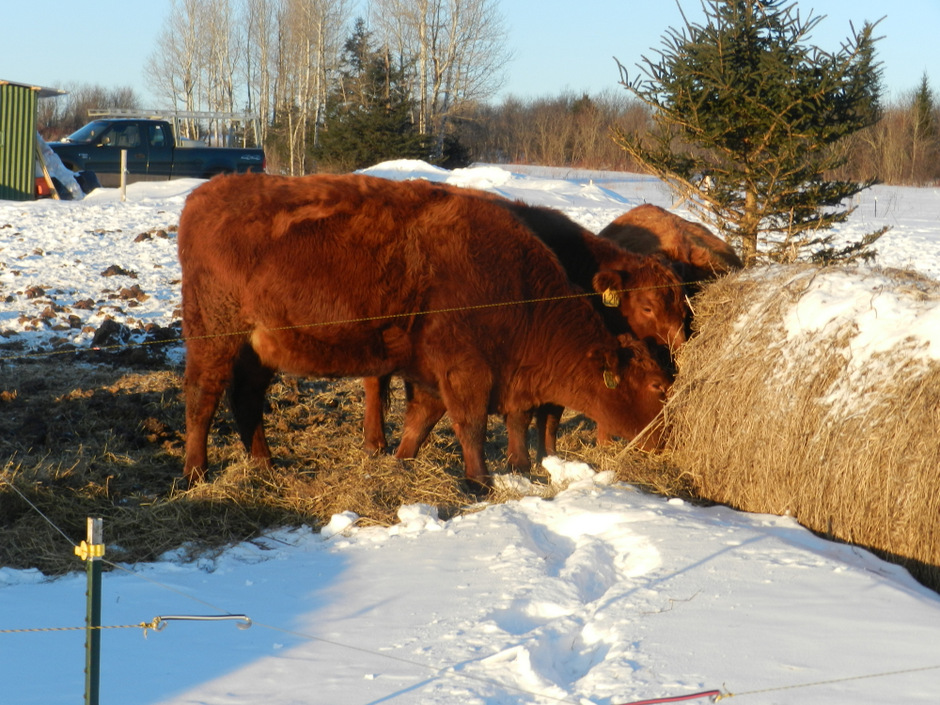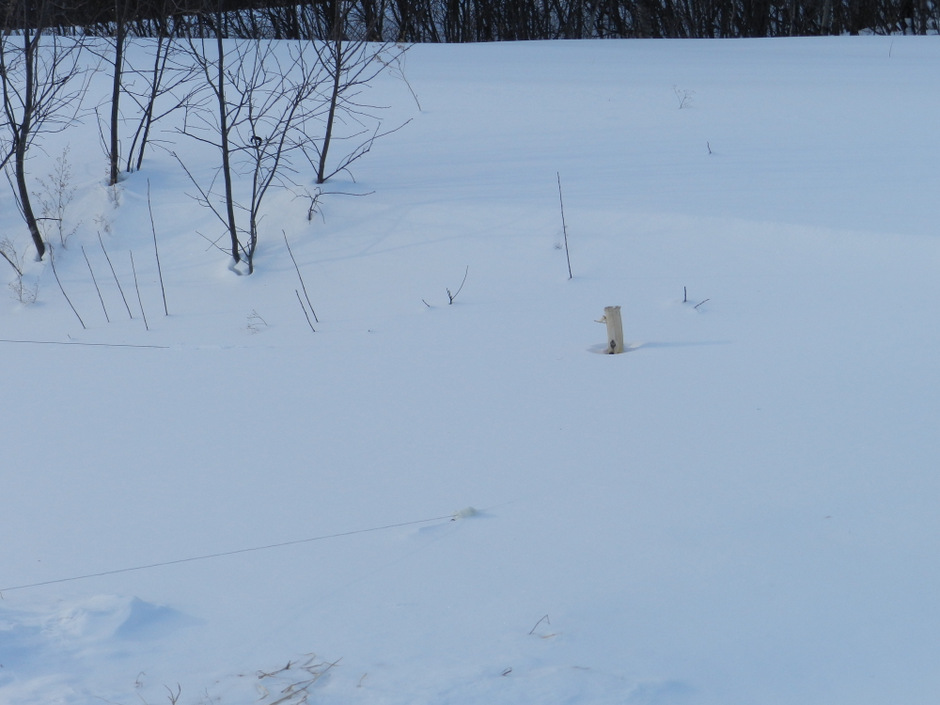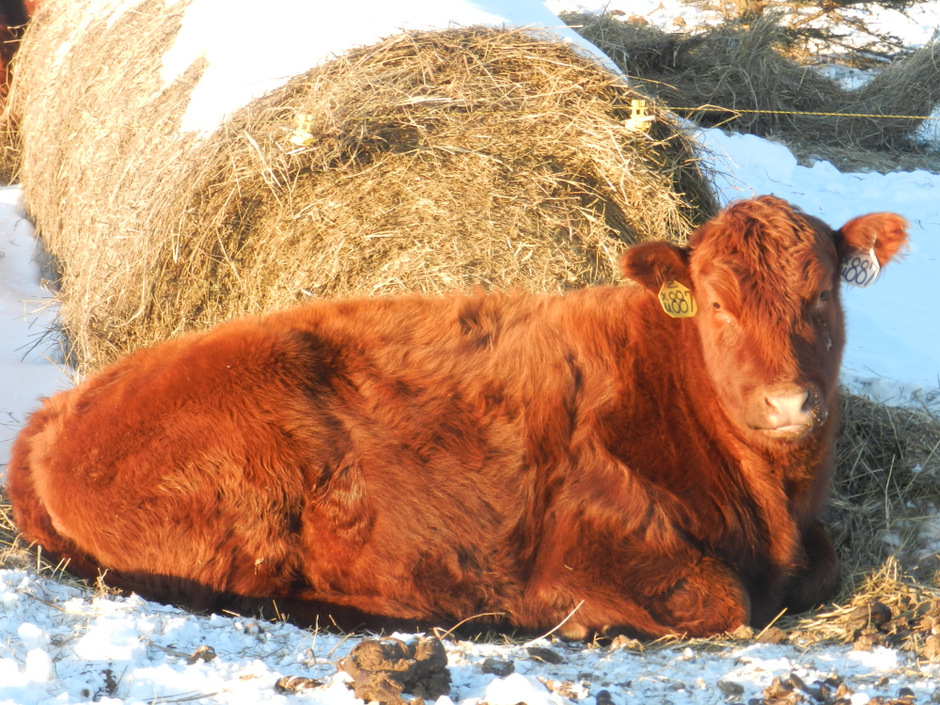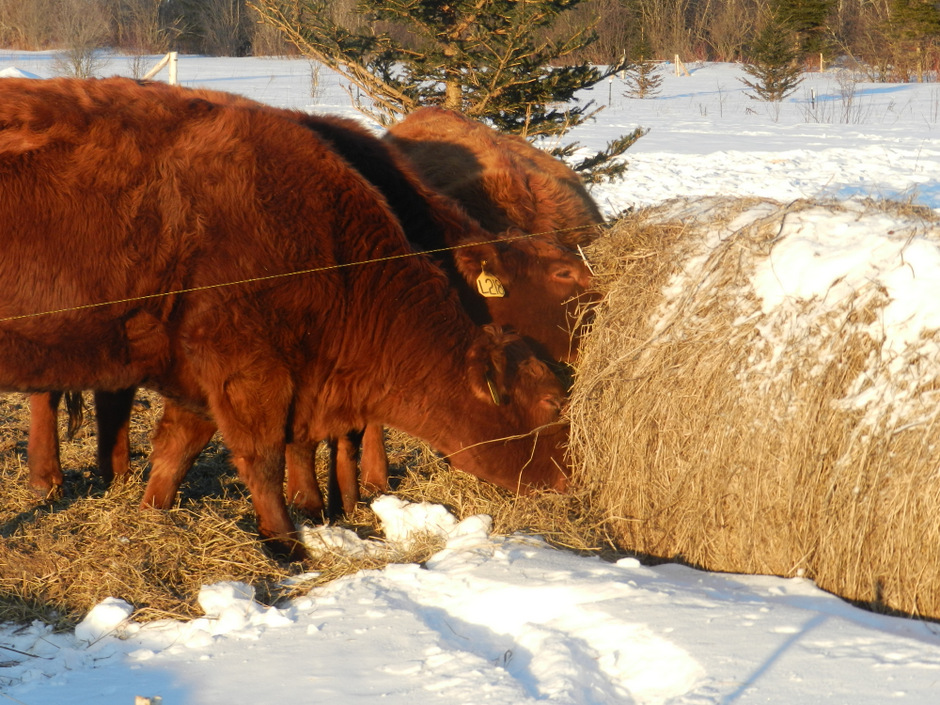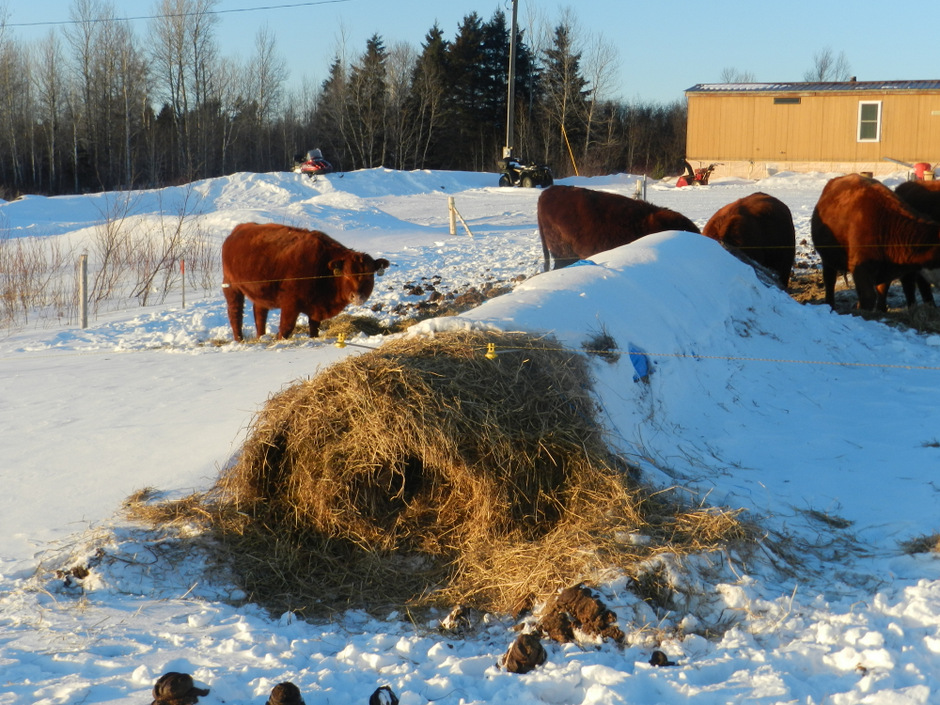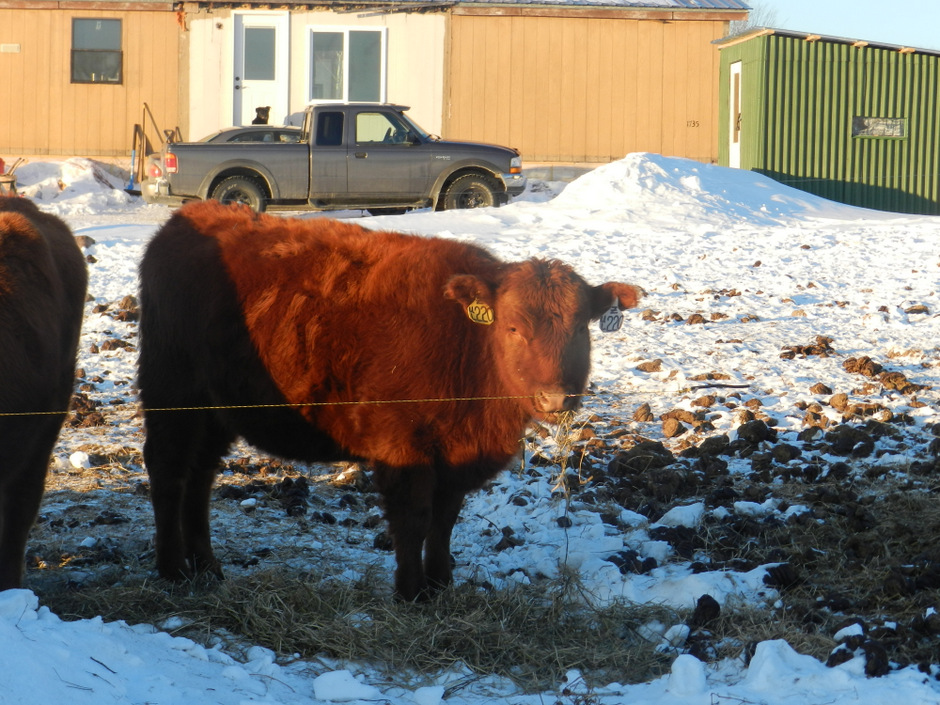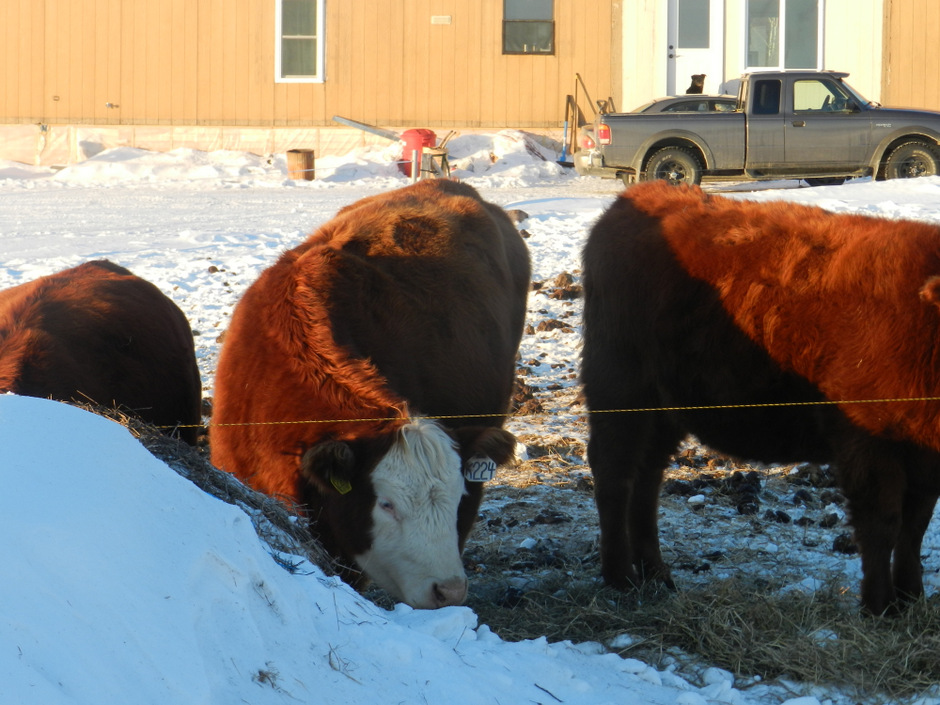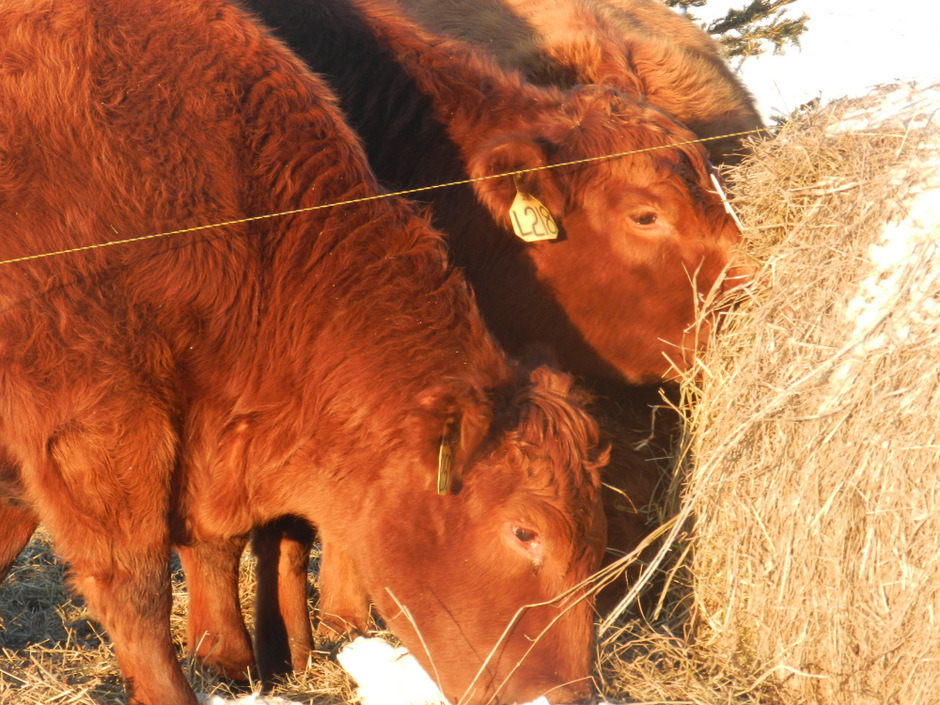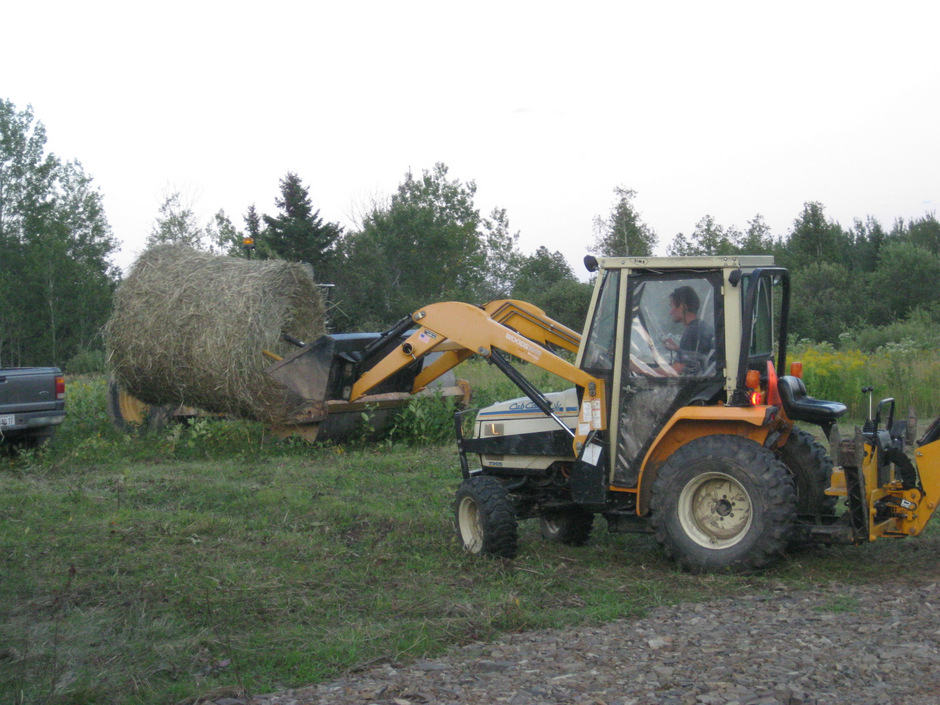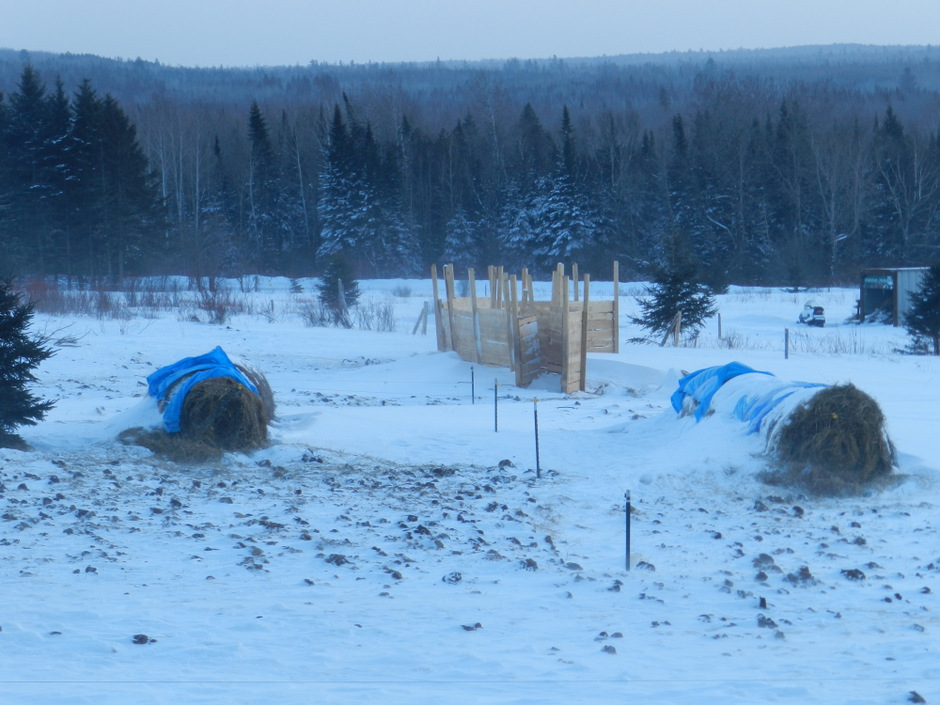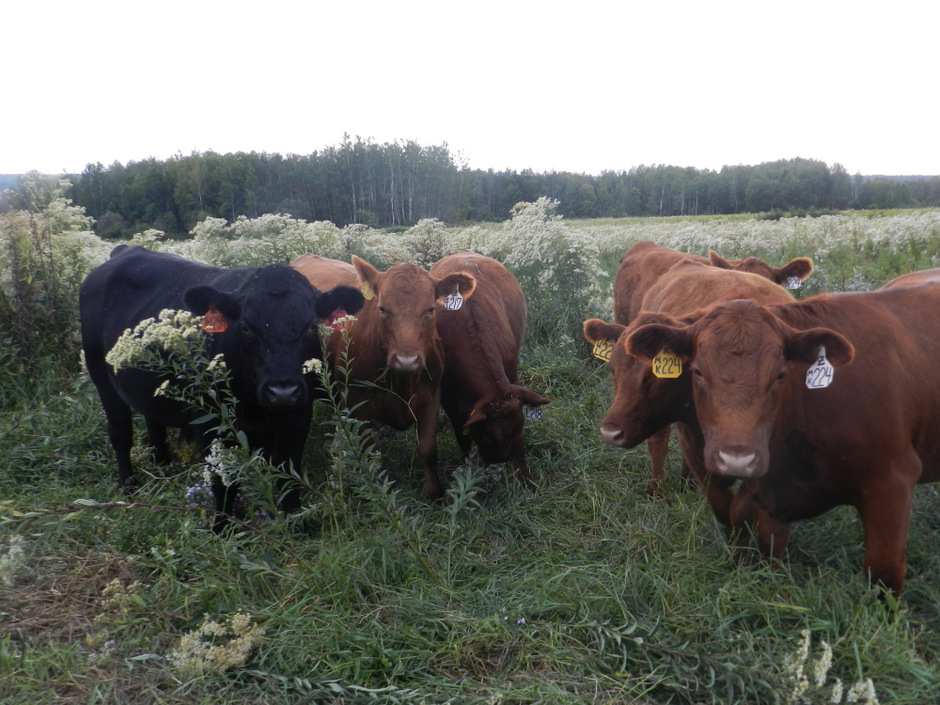
during the summer breeding season on our property.
Our post today focuses on selecting a bull or bulls for your breeding program.
Please click here to read our previous post on deciding your breeding season.
Please click here to read our introductory post for our Cattle Breeding blog series.
We had written this post BEFORE our calving season started. With four calves on the ground, we feel that we need to add a few caveats. In fact, we have written another post, partner to this one, adding information and “words of wisdom” in selecting a bull. Please click here to read that post.
Bull selection is one of the most important elements to having a successful cow-calf operation. Having the right genetics that match well with your environment is critical to your herd’s performance. Because calves will get half of their genetic material from the bull and a single bull can breed many cows, choosing the right bull has the greatest single influence in improving the genetics of a herd. You need to carefully consider the goals of your breeding program and your operation as a whole and what traits and genetics you are looking to add to your herd.
Some questions you should consider in selecting a bull are:
Will you be using a bull from within your own herd or will you be leasing a bull?
- Using your own bull is ideal as you are familiar with his genetic and heath history. In addition, your bull should be comfortable and familiar with your property and with you. Furthermore, you do not have to contend with a lease contract, a breeding fee and the dynamics of transporting the bull. However, bulls typically must be purchased from a seedstock operation or another farm to avoid genetic problems due to inbreeding.
Leasing a bull is a great option for those without the financial means, facilities and/or the desire to have their own bull. Here are some things to consider:
- When leasing a bull, you need to consider the health of the bull and of the herd that he is coming from. You do not want your leased bull to introduce a disease to your herd. You want him to be in the best physical shape possible, with current vaccinations. Ask to see his pedigree and his health records. Ask to see any and all records on him. Ask about his breeding success and the condition and performance of his offspring. Conformation is important to consider in selecting your bull. Your bull should be well-muscled (too much can be a negative, though) with a deep chest and short, muscular neck. He should have a good coat (indication of good diet) and alert eyes. He should be docile and quiet and allow you to get close to him and walk around him.
- Pay close attention to the condition of the other animals on the farm and of the cleanliness of the farm as a whole. If the farm has sickly animals and has unsanitary and/or unsafe facilities and pasture conditions, you need to think twice about leasing a bull from them – even if the price is a good deal. This is not the time to ‘save’ money. You know the saying “You get what you pay for”? Remember that when deciding on a bull to lease.
- Have a written lease contract with all conditions and restrictions clearly outlined, including all fees.
What type of calves work best in your operation?
Are you looking for a bull that throws large calves?
- With a larger calf, you have the opportunity for more gain, a higher weaning weight and a larger paycheck in the Fall when you sell the calves as feeders.
- A larger calf may be able to handle weather-related and other stress better than a smaller calf.
- A larger calf, though, can make labor and delivery more difficult on the cow, especially if you have a small-framed cow and/or a first-calf heifer. You may have to provide a lot of assistance to the mother cow during delivery.
- Do you have the facilities, equipment and the know-how to assist in pulling calves?
- Do you work on the farm full-time or do you have a job that takes you away from the farm during the calving season?
Are you looking for more compact, smaller-framed calves?
- Labor and delivery, especially for a first-calf heifer, may be easier with a smaller calf. Nothing is guaranteed, though.
- Possibly less or no assistance needed at delivery with pulling calves.
- Advantageous if you have a full-time job away from the farm and/or do not have good facilities for calving (e.g., barn with a stall to restrain mother cow while you pull the calf).
- Smaller calves will obviously have lower birth weights and you need to consider such impacts on weaning weight and average daily gains if you sell these calves as feeders and also, yearling weights if you are using these calves as replacement heifers or adding to your herd.
Are you breeding heifers?
- When breeding heifers you especially need to consider the size and age of the bull and the type of calves he produces.
- You may want to consider a calving ease bull for your first-calf heifers.
- Putting a mature, low-calving ease bull on a first-calf heifer may produce a very hard and difficult calving for that heifer and leave that animal in poor physical condition. The stress of a difficult delivery could affect the rate and degree of bonding with the calf, milk production and the success of being bred-back.
The Angus Organization provides an excellent description of heifer calving ease EPD’s (expected progeny differences).
Calving ease. Heifer calving ease EPDs were calculated using a multi-trait animal model including birth weight and calving score data. The result is a heifer calving ease direct and heifer calving ease maternal EPD, as defined below.
-
Calving Ease Direct (CED): Calving Ease Direct EPD is expressed as percentage of unassisted births, with a higher value indicating greater calving ease in first-calf heifers. It predicts the average difference in ease with which a sire’s calves will be born when he is bred to first-calf heifers.
-
Calving Ease Maternal (CEM): Calving Ease Maternal EPD is expressed in percentage unassisted births with a higher value indicating greater calving ease in first-calf daughters. It predicts the average ease with which a sire’s daughters will calve as first calf heifers when compared to daughters of other sires.
Are you breeding cows?
- While CED is intended to be considered in breeding first-calf heifers, some of the top Angus breeding programs, such as Beckton Stock Farm in Sheridan, WY encourage using their calving ease bulls on your cows as well. They explain that calves from these cows can provide a good source for replacement heifers in your herd.
- Using a non-calving ease bull may also be appropriate for breeding your cows. A mature cow has had more experience in calving and in maternal care-taking than a first-calf heifer. As such, she may be better equipped to deliver a calf not sired by a calving ease bull.
Calving Ease and Gestation Length
The ideal bull in the cow-calf operation is one who throws small calves that have high weaning weights in the fall. The advantage of having both calving ease and high pay weights is an attractive one, and can often be achieved by using short-gestation bulls.
- The standard gestation length of a cow is around 283 days.
- The fastest period of calf growth in the womb is during the last days of pregnancy (often around 1 pound per day, or more)
- By being born several days earlier, a calf with fast growth potential can be born at a lighter weight, making for easy calving, and still achieve a high weaning weight in the fall.
- Short Gestation Length (SGL) bulls produce smaller calves that will still reach maturity at a large size. Therefore, calves from these bulls should not be kept as replacement heifers with a smaller mature size in mind. Your cows may have low birth weights, but they’ll still be large at matureity.
- That said, you can have a short-gestational bull that is ALSO a calving ease bull. Our friend and mentor has had great success in using these SGL, calving ease bulls and does use some of these calves as replacement heifers and/or additional heifers to his herd.
- Even more time and thought needs to go into planning your breeding season when using SGL bulls, though.
Using a SGL bull can be advantageous for your heifers and cows.
- An earlier birth allows the mother more time to start cycling again and to build back her body condition for being bred back.
Feed Efficiency/Forage Convertibility:
Economically viable characteristics in a cattle herd include the ability to maintain weight on low quality forage. In fact, beef cattle were originally developed to take advantage of lower quality forage that wasn’t fit for dairy cattle, sheep and other livestock. Producers should look for a bull that can maintain his weight or even gain weight on a grass-only/roughage diet EVEN when that grass and roughage is of a lower quality.
Easy-keeper/easy fleshing: A bull that can convert forage efficiently is considered an easy-keeper, or easy-doer. This trait is often described as fleshing ability. The ability of a bull to maintain his weight on a grass-only or roughage diet is desirable, but is often related to smaller mature frame, which can sometimes impact market demand for your cattle.
Many bulls are growth-tested on a high octane ration that isn’t a realistic situation on the average cattle farm. These bulls may gain lots of weight in the feedlot, but turned out to pasture they can fall apart. If a bull loses weight or cannot maintain his weight on a grass-only/roughage diet he is considered a hard-doer and will cost producers more in feed. Tread cautiously in leasing a bull that is a hard-doer. Do you want to bred that into your herd? If your operation is grass-only/roughage, you may struggle with daily gains and weaning weights in feeder calves from sires that are hard-doers.
There are many factors to consider when developing your breeding program and quite frankly, for newbies like us, it can be a tad bit overwhelming. We are learning every day, as we consider the genetics we want bred into our herd and how to develop a breeding program that meets the goals and needs for the growth of our operation and performance of our animals.
Two sets of genetics go into making a calf and therefore, much thought and genetic consideration needs to be taken into account when deciding what bull to breed to which heifer or cow.
Speaking from personal experience acquired in just these past few weeks, a calving ease bull or a bull with calving ease genetics does not 100% guarantee a small calf and/or an easy birth. Please click here to read more about our experience.
